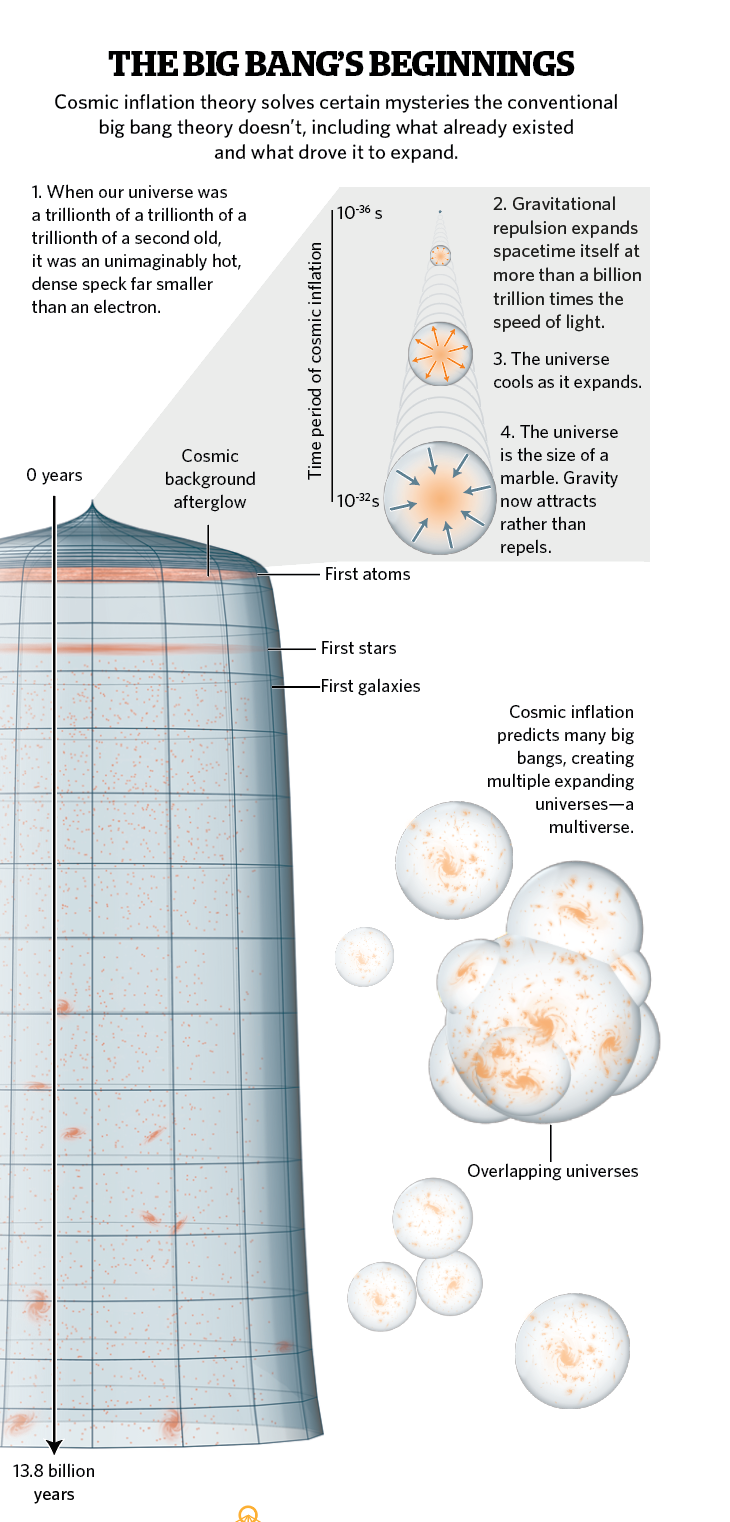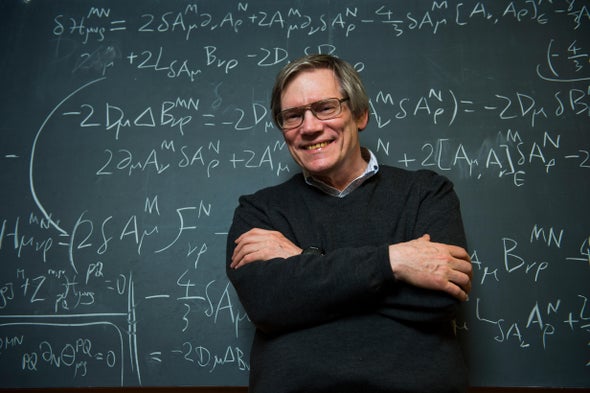Our universe began with a bang—a big bang. The explosion stretched the very fabric of spacetime, sending superheated matter in all directions. As it expanded, the matter cooled and started to aggregate, forming atoms, then elements, then stars, galaxies and, ultimately, all we know and see today.
For physicist and cosmologist Alan Guth, one big question about the big bang remains: “What was it that banged?”
The answer lies in his theory of cosmic inflation. “It sets up the conditions for the big bang—like a prequel,” says Guth, a professor of physics at MIT. For developing that theory, Guth and two of his colleagues, Andrei Linde at Stanford University and Alexei Starobinsky at the Landau Institute for Theoretical Physics of the Russian Academy of Sciences near Moscow, were awarded the 2014 Kavli Prize in astrophysics.
According to the theory, for less than a millionth of a trillionth of a trillionth of a second after the universe's birth, an exotic form of matter exerted a counterintuitive force: gravitational repulsion. Although we normally think of gravity as being attractive (picture Isaac Newton and the falling apple), Albert Einstein’s theory of general relativity allows for such a force.
Under the conditions present in the early universe, when temperatures were extraordinarily high, Guth says the existence of this material was reasonably likely. “It only has to be a speck,” he says. “But when that speck starts to inflate, the expansion is exponential.”
Contemplating those fateful events—and what happened next—Guth says, raises some of the most fascinating questions in science: How did our universe begin, where is it going, and what caused it to exist in the first place?
“We don’t necessarily expect to answer those questions next year,” he adds. But “anything that makes small steps towards understanding the answers is thrilling.”
Here, Guth addresses some of those mysteries, including where our universe comes from, what else is out there, and how inflation may have spawned primordial black holes, a hypothetical entity that could represent the universe’s long sought-after dark matter.
What was there before inflation started?
That is something I have been thinking about in the context of a paper that I’m writing with Sean Carroll [at Caltech]. The idea is that the universe is actually eternal. It existed at all times, so there is no beginning to explain. The laws of physics themselves don’t seem to make any significant distinction between the future and the past. As the universe evolves, its entropy, or disorder, will grow. What we call the future is simply the direction of higher entropy; a state of lower entropy is what we call the past. But a curious thing happens if you take this initial low entropy state and follow it backwards in time, towards what we previously called the past: the entropy will also start to grow in that direction. I think that the people living [along that arrow of time] would not feel anything different from what we feel. Everybody will think that they’re living from the past towards the future, except what they call the future will be what we call the past.

What can inflation tell us about the forces that hold our universe together?
If the only matter in the galaxies was the matter we see, there would not be nearly enough gravity to hold galaxies together. With them spinning as fast as they are, they would just fly apart—or they would never have formed in the first place. The assumption is that there must be other matter present to create a stronger gravitational field to hold the matter in, even at these high velocities. That’s dark matter.
In collaboration with other physicists and students, I’m calculating the production of primordial black holes in a version of inflation called hybrid inflation. Primordial black holes could conceivably be dark matter. They could also be the seeds that led to the supermassive black holes that we see in the centers of galaxies—black holes that have millions and even billions of solar masses. If we could find primordial black holes, it would be a huge thing.
Is our universe all there is?
The theory of eternal inflation says that once inflation starts, it never completely stops. Rather, it ends in places, and universes form there. We call them pocket universes because they’re not everything that exists. We are living in one of these pocket universes. And even though the pocket universes keep forming, there’s always a volume of exotic repulsive gravity material that can inflate forever, producing an infinite number of these pocket universes in a never-ending procession.
Each individual pocket universe will presumably ultimately die, in the sense that it will run out of energy and cool down. But in the big picture of all the pocket universes, life would not only go on eternally, but there’d be more and more of it every instant.
Are there any drawbacks to living in a multiverse?
The problem with having an infinite multiverse is that if you ask a simple question like, ”If you flip a coin, what’s the probability it will come up heads,“ normally you would say 50 percent. But in the context of the multiverse, the answer is that there’s an infinite number of heads and infinite number of tails. Since there’s no unambiguous way of comparing infinities, there’s no clear way of saying that some types of events are common, and other types of events are rare. That leads to fundamental questions about the meaning of probability. And probability is crucial to physicists because our basic theory is quantum theory, which is based on probabilities, so we had better know what they mean.
To learn more about brilliant work of Kavli Prize Laureates, visit The Kavli Prize. To explore more of the biggest questions in science, click here.



